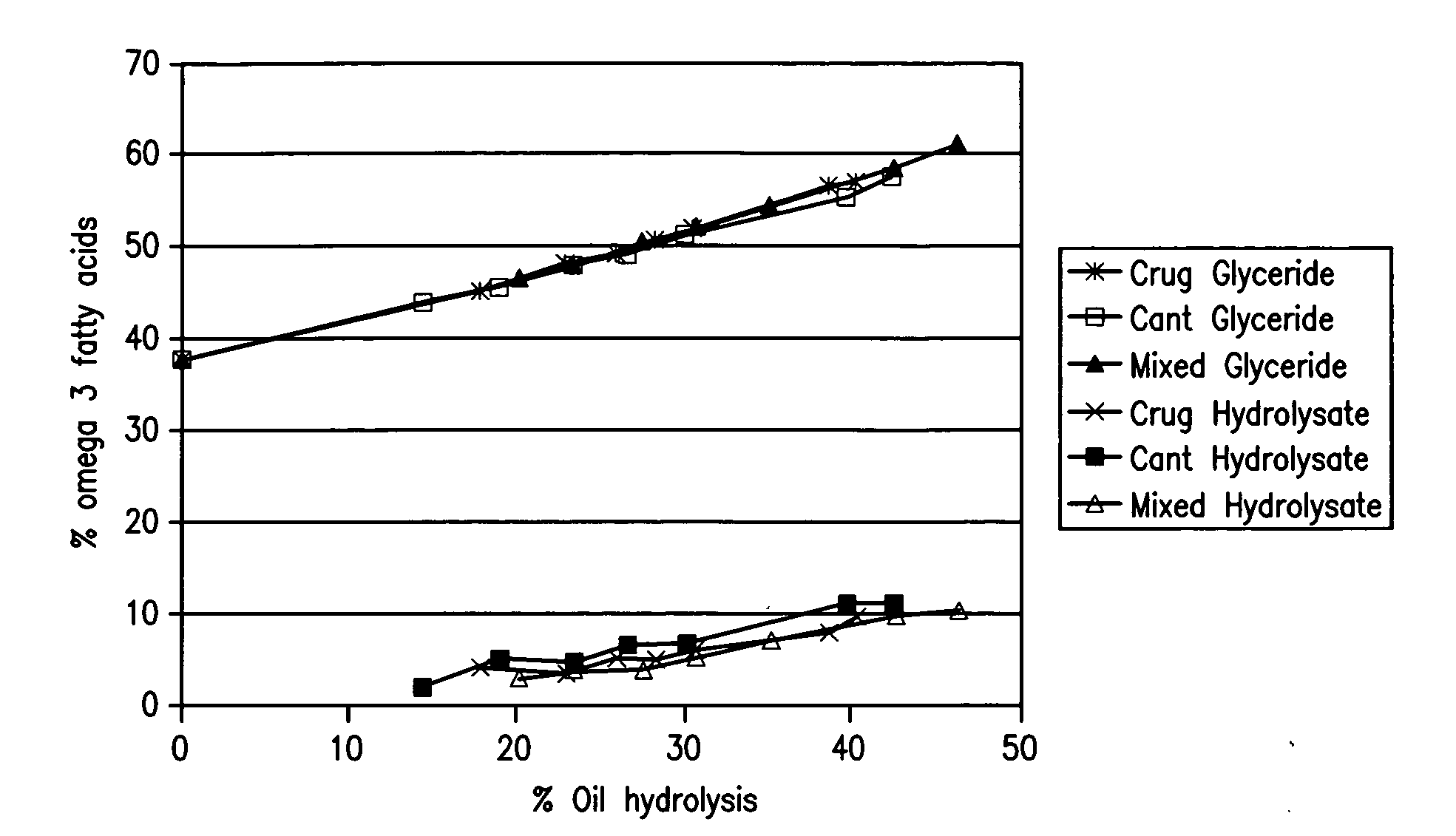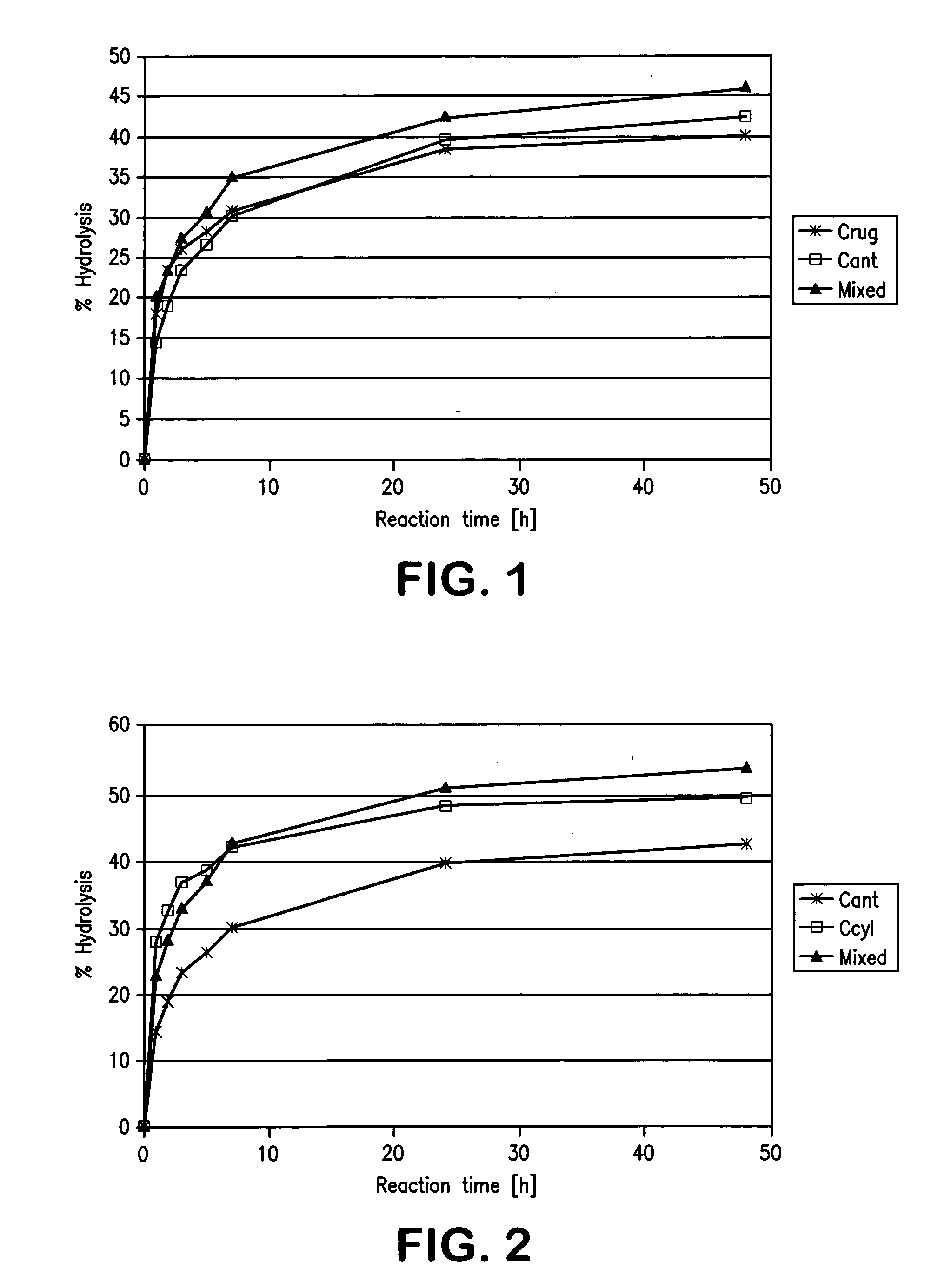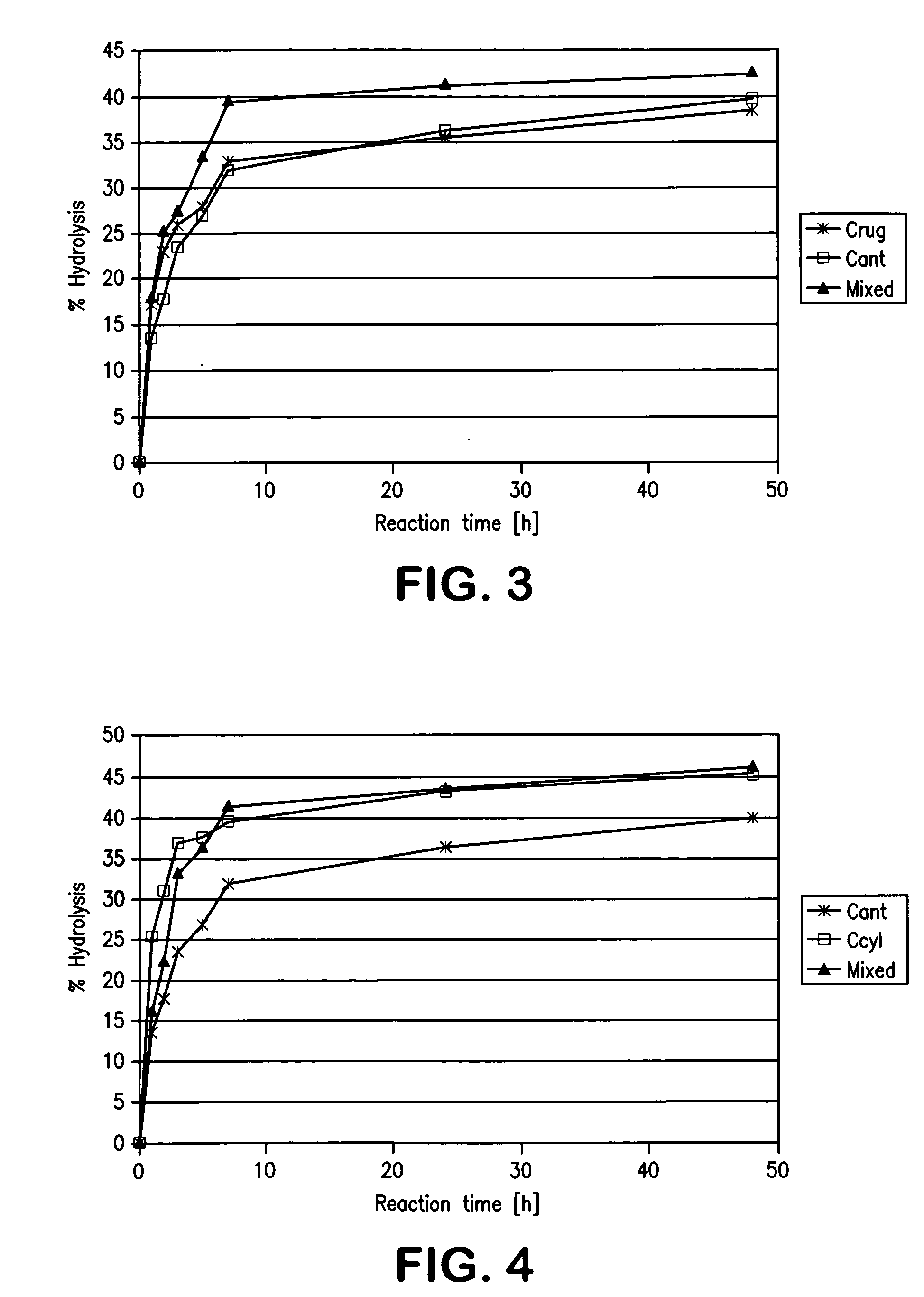Mixture containing fatty acid glycerides
a technology of fatty acid glyceride and mixture, which is applied in the field of mixture containing fatty acid glyceride, can solve the problems of product loss of low-temperature stability, difficult characterization of individual enzymes, etc., and achieve the effects of reducing the concentration of saturated fatty acids, negative sensory properties, and increasing pufa concentration
- Summary
- Abstract
- Description
- Claims
- Application Information
AI Technical Summary
Benefits of technology
Problems solved by technology
Method used
Image
Examples
example 1
Screening for Positive Selectivity for Saturated Fatty Acids on the Basis of Thistle Oil
[0127]10 g thistle oil and 5 g water were incubated with various enzymes while stirring at room temperature. Samples of the oil phase were then analyzed for the composition of the fatty acids released. The sum of palmitic and stearic acid in the starting oil was 10.0%.
TABLE 3enzyme screening on the basis of thistle oilLipase from organismSum of palmitic and stearic acidAlcaligenes sp17.5%Aspergillus niger23.3%Aspergillus oryzae22.7%Candida antarctica A29.0%Candida cylindracea7.6%Candida rugosa8.8%Geotrichum candidum3.6%Penicilium roqueforti15.4%Pseudomonas fluorescens18.3%Pseudomonas sp.11.2%Rhizopus javanicus18.9%Rhizopus niveus17.7%Rhizopus oryzae19.2%Thermomyces lanugenosus22.9%
[0128]Most enzymes showed an enrichment of saturated fatty acids in the hydrolyzate which is generally attributable to a negative selectivity for trilinoleate. Lipase A from Candida antarctica had the highest percentage...
example 2
Screening for Positive Selectivity for Saturated Fatty Acids on the Basis of Rapeseed Oil
[0129]10 g rapeseed oil and 5 g water were incubated with various enzymes while stirring at room temperature. Samples of the oil phase were then analyzed for the composition of the fatty acids released. The sum of palmitic and stearic acid in the starting oil was 6.5%.
TABLE 4enzyme screening on the basis of rapeseed oilSum of palmiticLipase from organismand stearic acidAspergillus niger8.6%Aspergillus oryzae7.2%Candida antarctica A10.3%Candida cylindracea5.8%Candida rugosa5.6%Geotrichum candidum1.7%Mucor javanicus8.9%Penicilium roqueforti6.9%Porcine pancreas8.1%Pseudomonas cepacia8.0%Pseudomonas fluorescens7.7%Pseudomonas stutzeri7.4%Rhizomucor miehei7.8%Rhizopus javanicus8.4%Rhizopus niveus8.8%Rhizopus oryzae8.1%Thermomyces lanugenosus8.1%
[0130]Some of the enzymes showed a slight enrichment of saturated fatty acids in the hydrolyzate which is distinctly less pronounced than in the hydrolysis of...
example 3
Screening for Negative Selectivity for PUFAs on the Basis of Mackerel Oil
[0131]10 g mackerel oil and 10 g water were introduced into a flask and heated with stirring to 45° C. or 60° C. Various enzymes were then added in a quantity of at most 1% free enzyme (commercial enzyme preparation) or 3% immobilized enzyme, after which the mixtures were incubated with stirring. Samples were taken during the reaction and the conversion was determined by measurement of the acid value. From a conversion of >40% degree of hydrolysis, the fatty acid composition of the fatty acids released was analyzed. The content of glyceride-bound omega-3 fatty acids (mainly EPA and DHA present) was calculated from these data. Enzymes which did not achieve a conversion of 40% over a reaction time of 24 h were not further evaluated. The content of omega-3 fatty acids in the starting oil was 37.6%.
TABLE 5enzyme screening on the basis of mackerel oilOmega-3EnzymeFormTemperatureConversionin glycerideAlcaligenes sp.F...
PUM
| Property | Measurement | Unit |
|---|---|---|
| melting point | aaaaa | aaaaa |
| melting point | aaaaa | aaaaa |
| weights | aaaaa | aaaaa |
Abstract
Description
Claims
Application Information
 Login to View More
Login to View More - R&D
- Intellectual Property
- Life Sciences
- Materials
- Tech Scout
- Unparalleled Data Quality
- Higher Quality Content
- 60% Fewer Hallucinations
Browse by: Latest US Patents, China's latest patents, Technical Efficacy Thesaurus, Application Domain, Technology Topic, Popular Technical Reports.
© 2025 PatSnap. All rights reserved.Legal|Privacy policy|Modern Slavery Act Transparency Statement|Sitemap|About US| Contact US: help@patsnap.com



